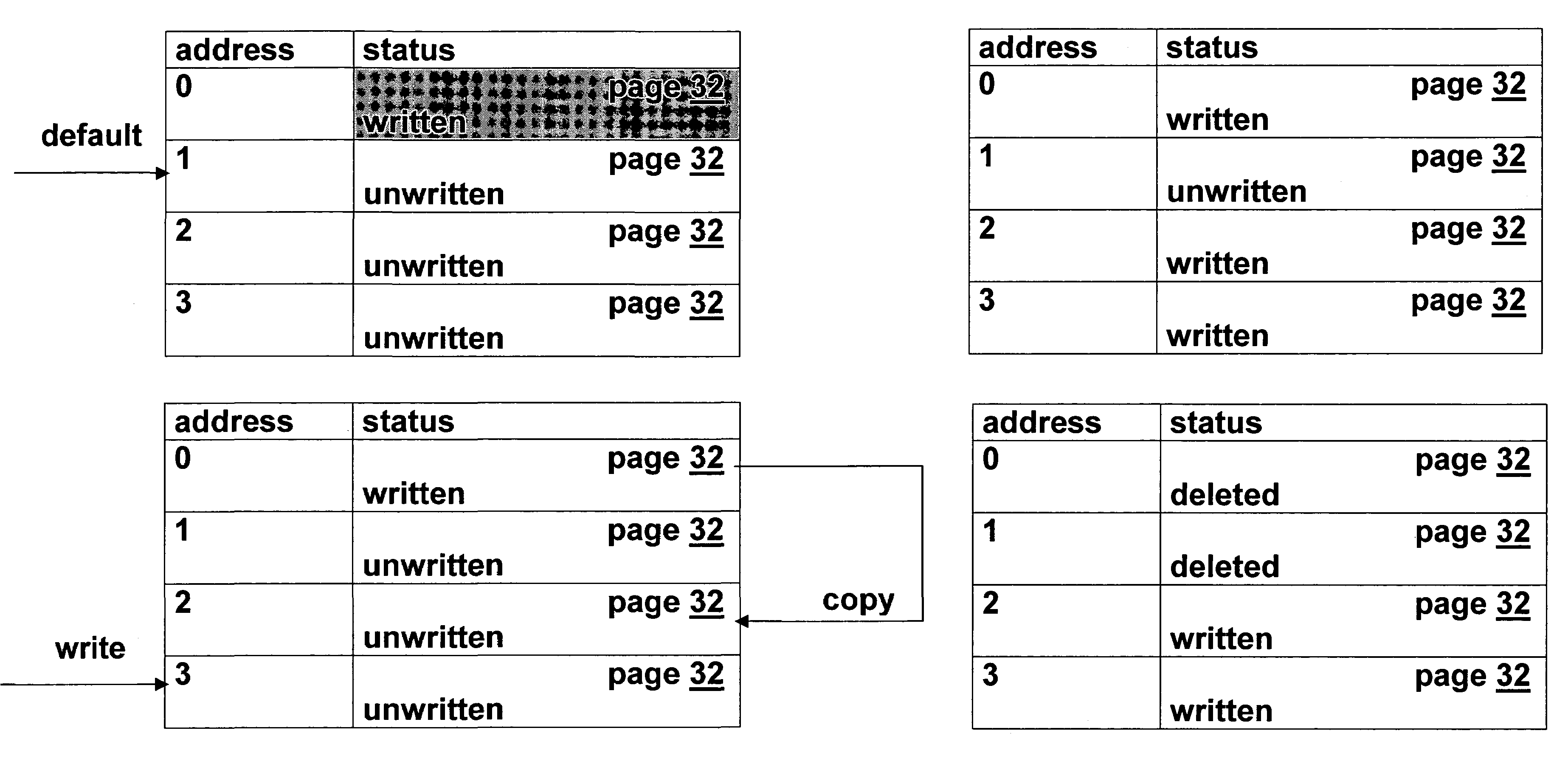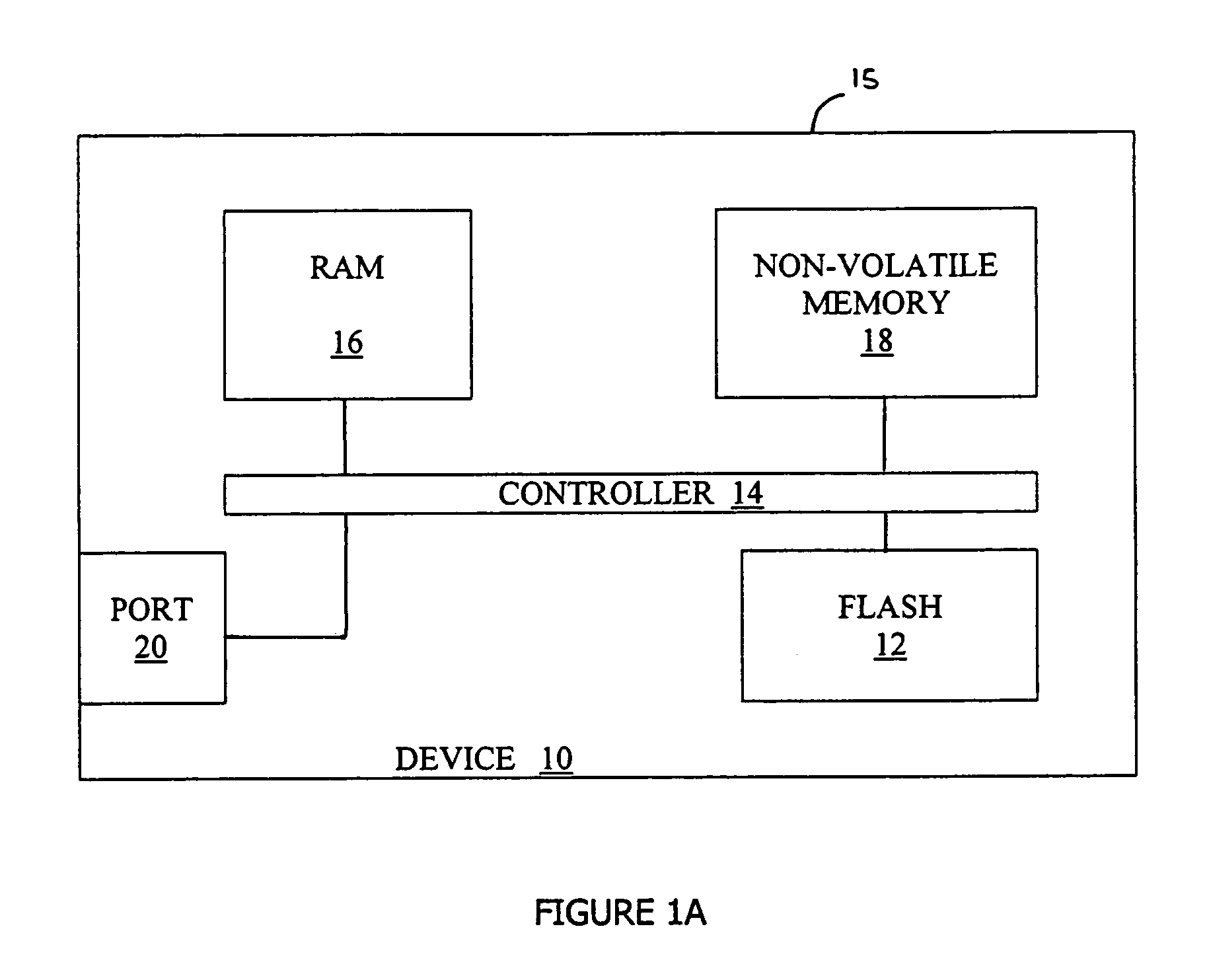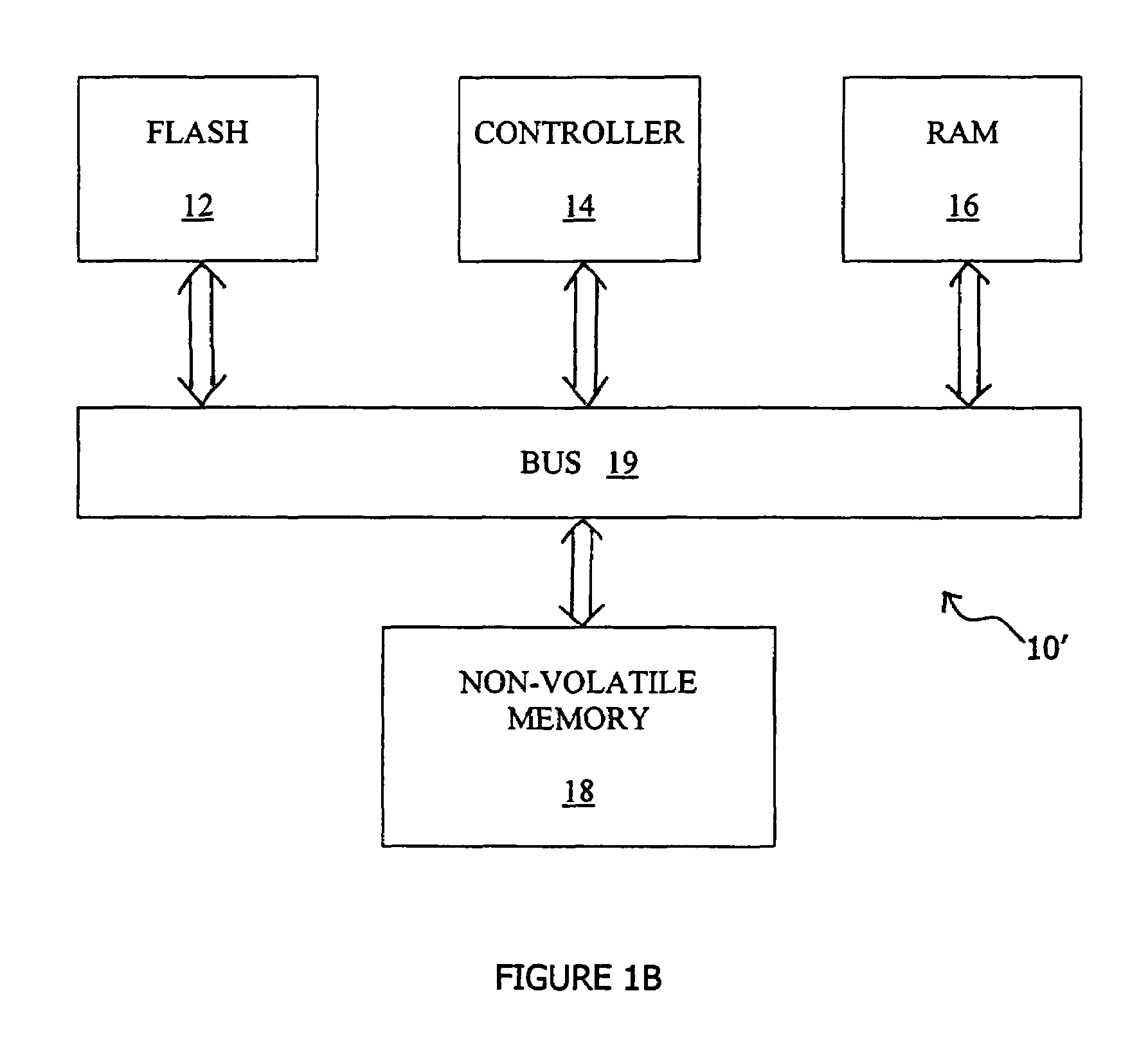Flash memory management method that is resistant to data corruption by power loss
a technology of flash memory and power loss, applied in the direction of digital storage, error detection/correction, instruments, etc., can solve the problems of inability to write algorithms, inability to integrate data stored in devices, and inability to control the speed of flash memory, so as to prevent corruption
- Summary
- Abstract
- Description
- Claims
- Application Information
AI Technical Summary
Benefits of technology
Problems solved by technology
Method used
Image
Examples
Embodiment Construction
[0047]The present invention is of a method of managing a page-based memory so as to prevent the corruption of data in previously written pages by an interrupted write operation. Specifically, the present invention can be used to manage flash memories with multi-level cells.
[0048]The principles and operation of memory management according to the present invention may be better understood with reference to the drawings and the accompanying description.
[0049]As noted above, the present invention is based on defining “risk zones” of pages that could be corrupted by interrupted writes. When a page is selected for writing new data, the risk zone(s) of the page(s) selected for that write operation is / are checked to see if any of the other pages in that / those risk zone(s) already store data, i.e., if the status of any of the other pages in that / those risk zone(s) is “written”. Note that in a flash management system that supports the “deleted” status, this check actually is only for pages in...
PUM
 Login to View More
Login to View More Abstract
Description
Claims
Application Information
 Login to View More
Login to View More - R&D
- Intellectual Property
- Life Sciences
- Materials
- Tech Scout
- Unparalleled Data Quality
- Higher Quality Content
- 60% Fewer Hallucinations
Browse by: Latest US Patents, China's latest patents, Technical Efficacy Thesaurus, Application Domain, Technology Topic, Popular Technical Reports.
© 2025 PatSnap. All rights reserved.Legal|Privacy policy|Modern Slavery Act Transparency Statement|Sitemap|About US| Contact US: help@patsnap.com



